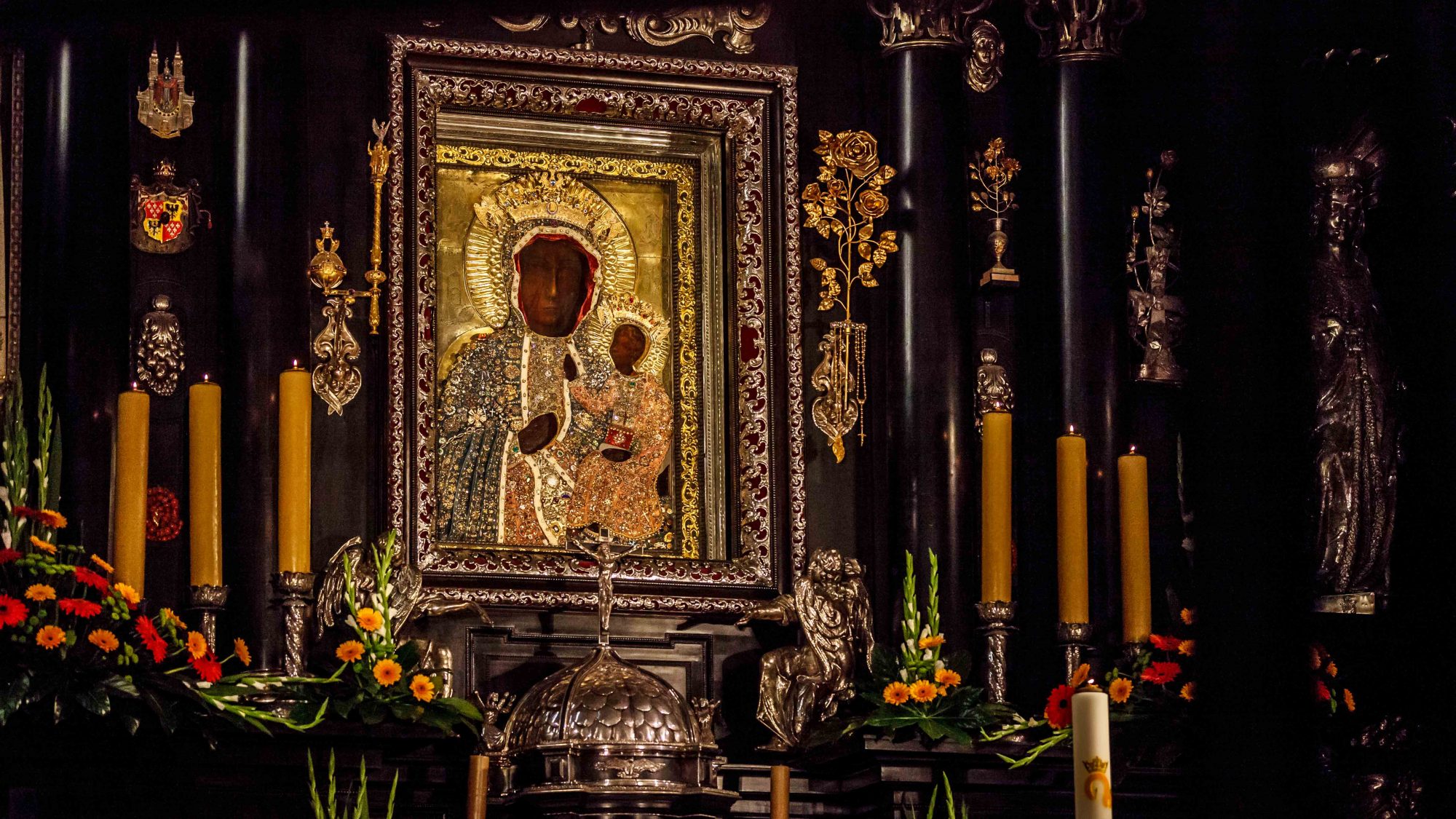
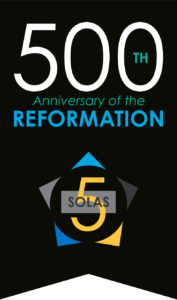 It was the 1600s. The Protestant Reformation had recently swept through Europe, but most Poles remained Catholic. The future of Poland’s independence looked grim when Sweden invaded and the Protestant Swedish army systematically began defeating Poland’s decentralized lot of private armies.
It was the 1600s. The Protestant Reformation had recently swept through Europe, but most Poles remained Catholic. The future of Poland’s independence looked grim when Sweden invaded and the Protestant Swedish army systematically began defeating Poland’s decentralized lot of private armies.
When Swedish forces advanced to the Jasna Gora Monastery—a Catholic monastery in a small city named Czestochowa—they faced a surprise. In an Alamo-like display of valor, an outnumbered band of Catholic monks and volunteers held the large Swedish army at bay for weeks, eventually forcing them back. This defeat inspired the Polish people to rally and push the Swedes from their country.
The monastery housed an ancient church painting of Mary and baby Jesus. Many Poles believe that Mary herself fought on their behalf in that decisive battle. Known as the Black Madonna, the painting became the critical agent binding Poland’s Catholic faith to its national identity.
The Black Madonna: Lore and Legend
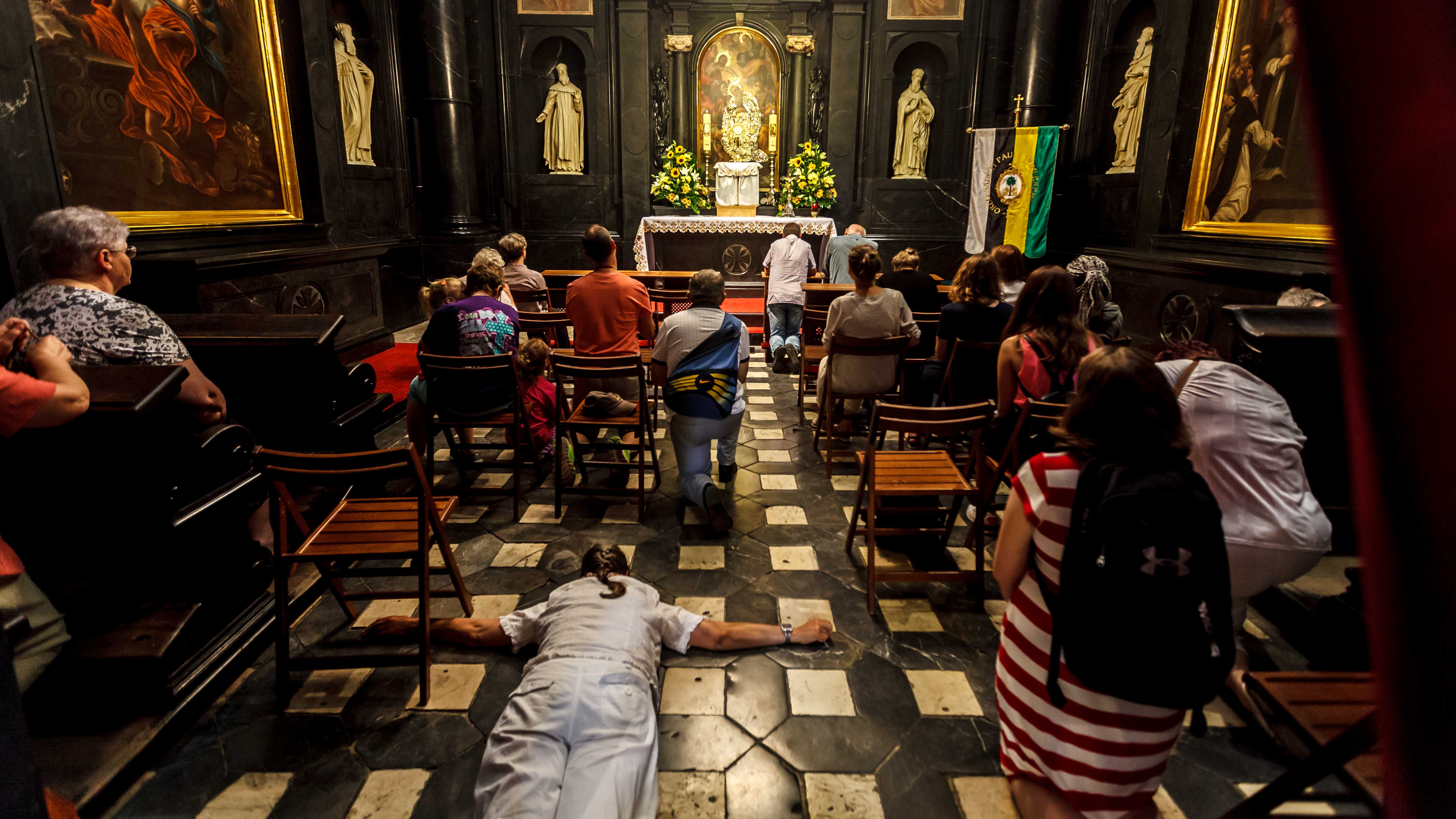
Within Jasna Gora Monastery, worshipers visit a small chapel adjacent to the main sanctuary housing the Black Madonna painting.
Legend weaves in and out of the Black Madonna’s history. Although art historians differ about the painting’s original date, tradition claims that the apostle Luke painted the image on top of a table taken from Joseph and Mary’s home.
By the time of the Swedish invasion, the Black Madonna had already been in Poland as an honored religious icon for hundreds of years. When pre-Reformer Hussites invaded Poland in the 1400s, they stole the painting and slashed Mary’s face with a sword. According to legend, the Hussite soldier who slashed the painting collapsed dead.
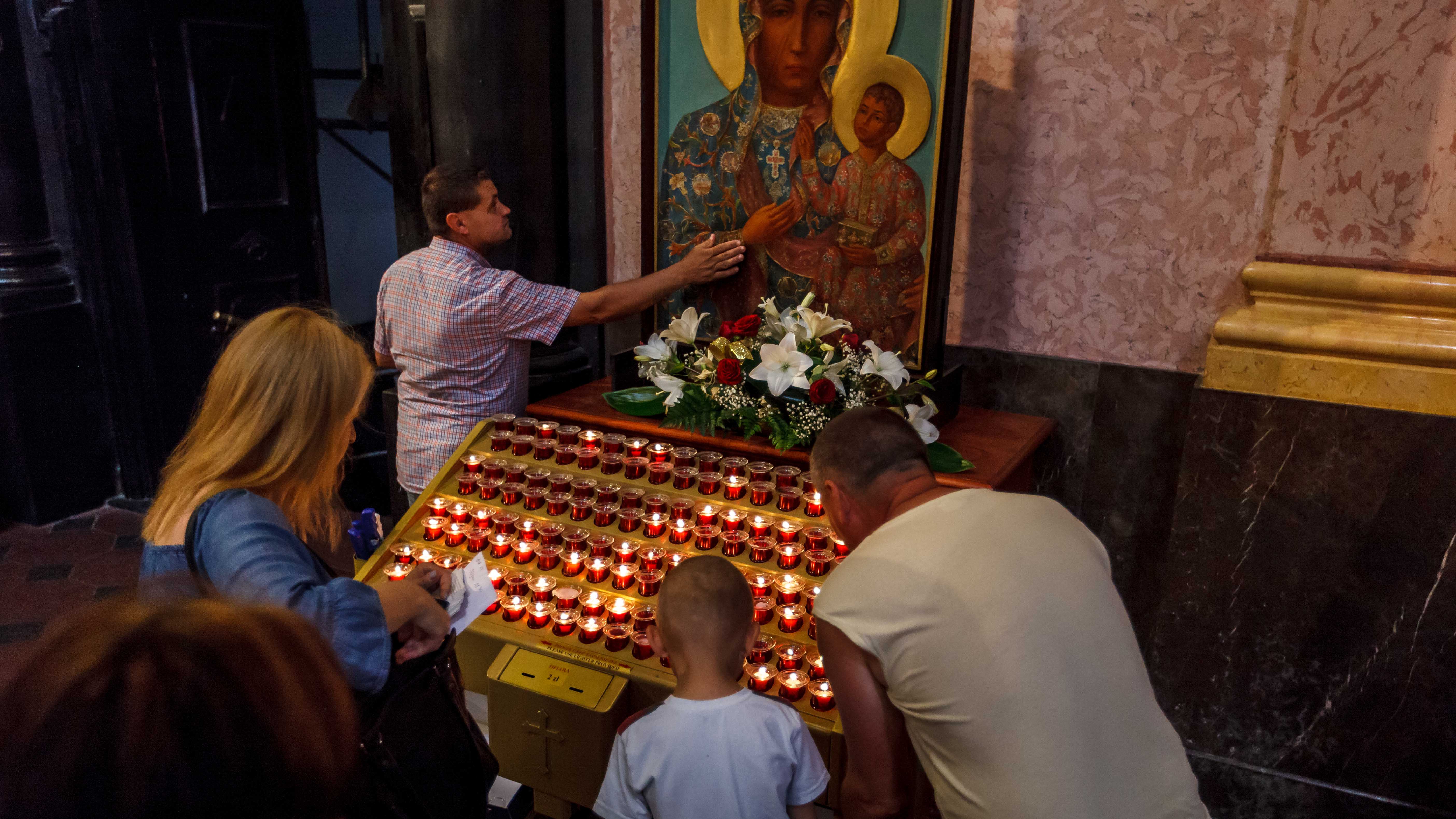
A man reverently touches a replica of the Black Madonna while visitors purchase prayer candles.
Catholics over the centuries have shown respect to images of Mary through a variety of actions. The votive candles lit below her image represent prayers offered by pilgrims and visitors. Historians believe that the ceremonial use of candles in worship over the centuries contributed to the darkened faces in the painting and the name “Black” Madonna.
Catholic Devotion to the “Queen and Protector of Poland”
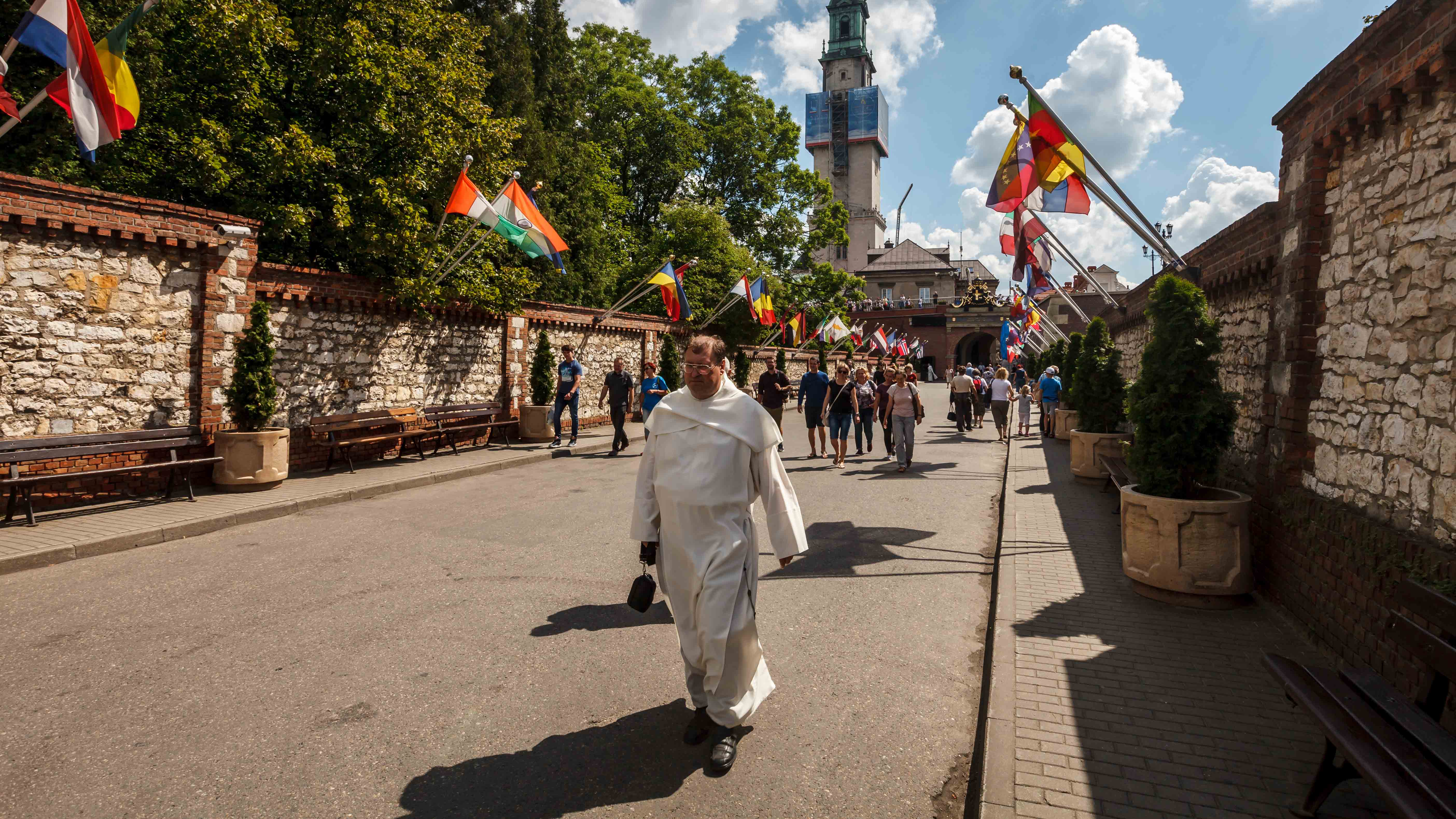
A priest walks along the road leading to the monastery.
After the siege at Jasna Gora, the king of Poland crowned the icon “Queen and Protector of Poland.” From that point, the Jasna Gora monastery evolved into one of the top Catholic pilgrimage sites in the world. Every year, between four and five million pilgrims visit the monastery. Of these, almost half a million people arrive on August 15, the day of the Assumption of Mary.
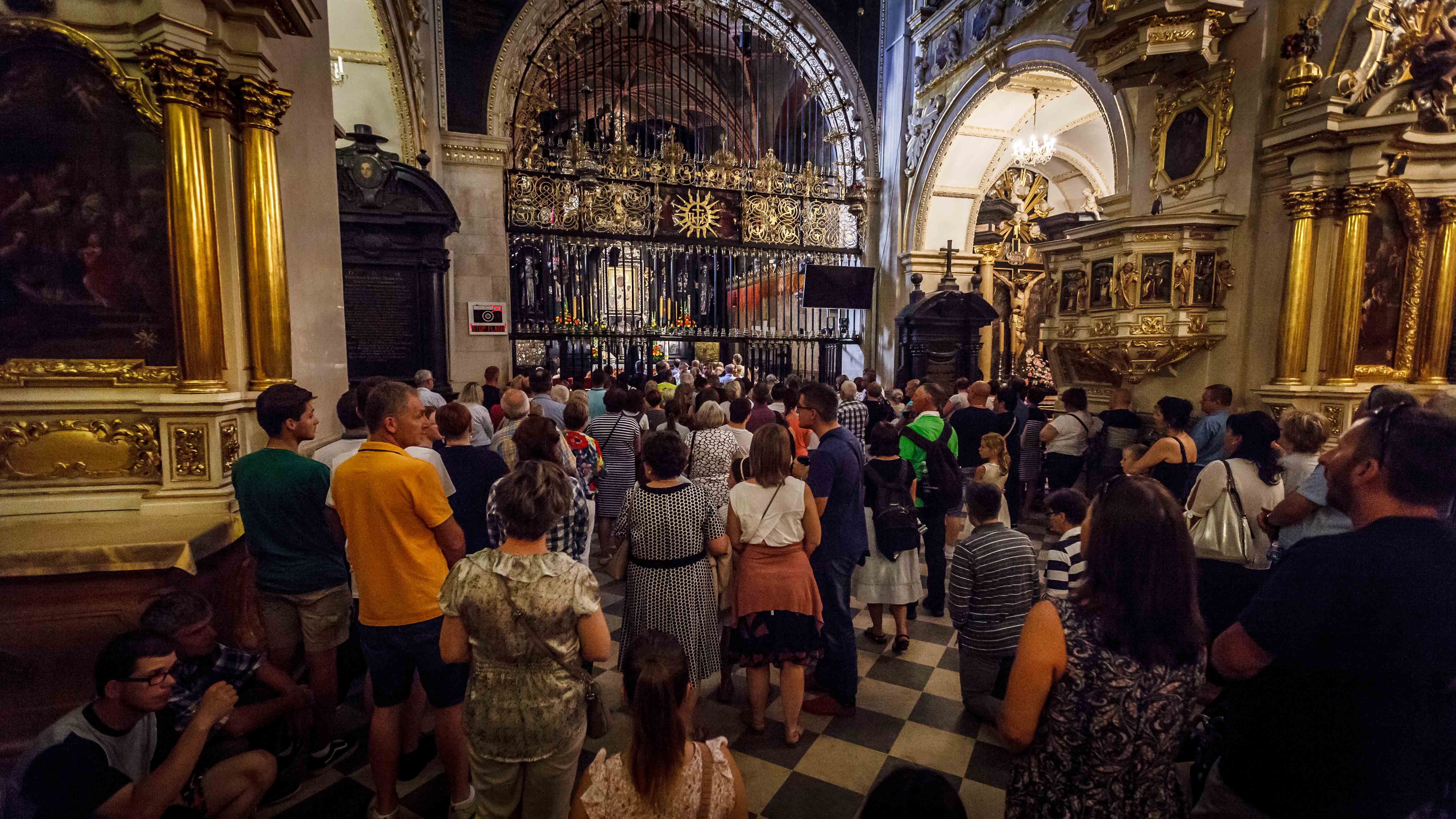
Visitors crowd at the chapel that showcases the icon of Mary.
Catholics believe that at the end of Mary’s earthly existence, God transported her body and soul to heaven. This doctrine of Mary’s assumption came from a papal decree ex-cathedra, “from the chair,” which Catholics regard with the same infallible authority of Scripture. For the day of Mary’s Assumption, many pilgrims trek the 140 miles from Warsaw to Czestochowa by foot—some even crawling the final quarter mile.
After Nazis imposed a ban on pilgrimages to the Black Madonna during World War II, a defiant Polish student secretly visited the Black Madonna. Many years later, the devout young man became Pope John Paul II.
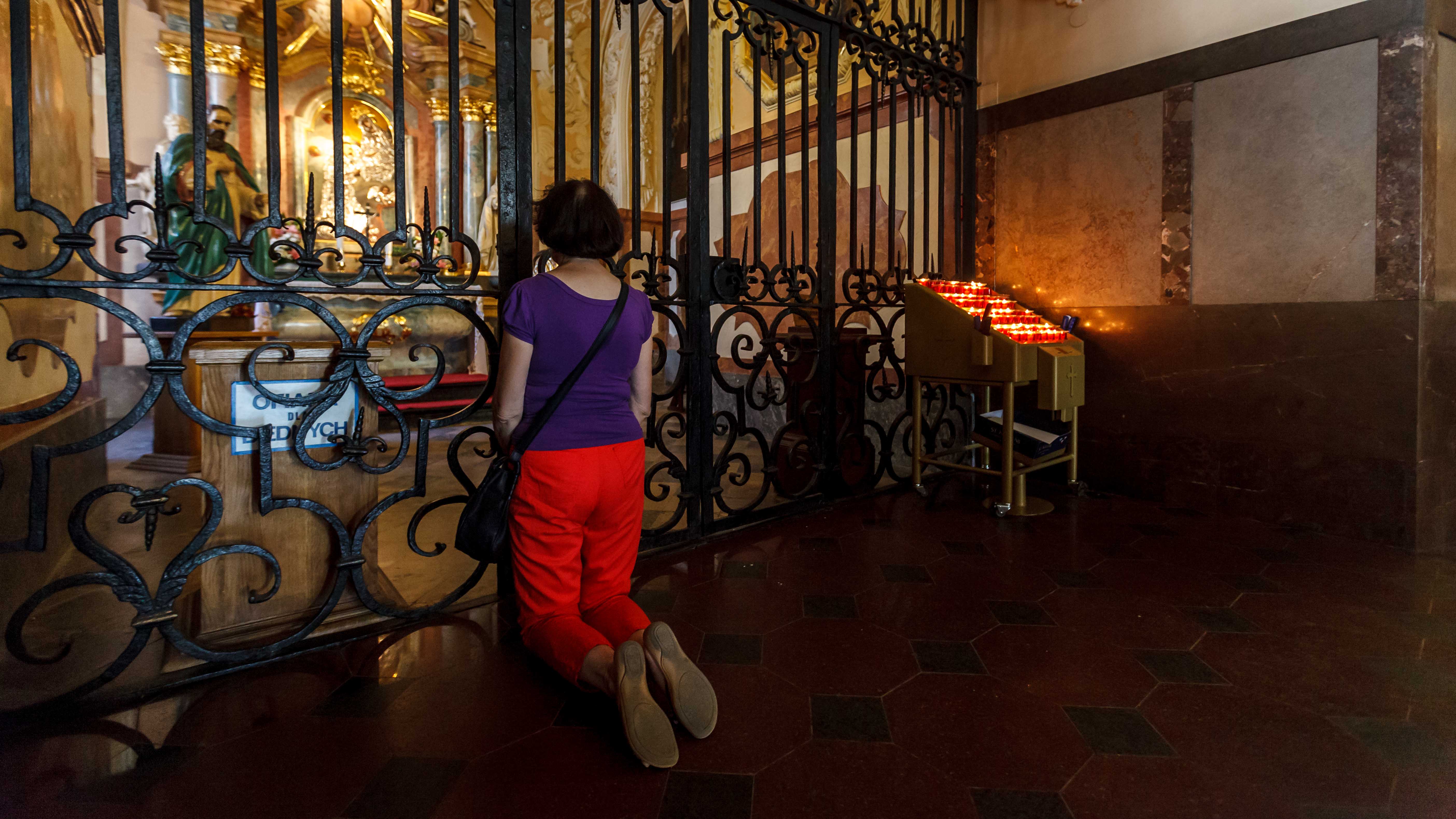
A woman kneels in worship at the Jasna Gora monastery.
Amid a great controversy in the eighth century, the Seventh General Council decided that Christian images, “icons,” were appropriate for honor. The veneration of icons—shown by actions like kissing and bowing down to them—was meant to point to the ultimate adoration of God himself. The Protestant Reformers of the sixteenth century, however, rejected icons. They were convinced that the practice of venerating images had become idolatrous.
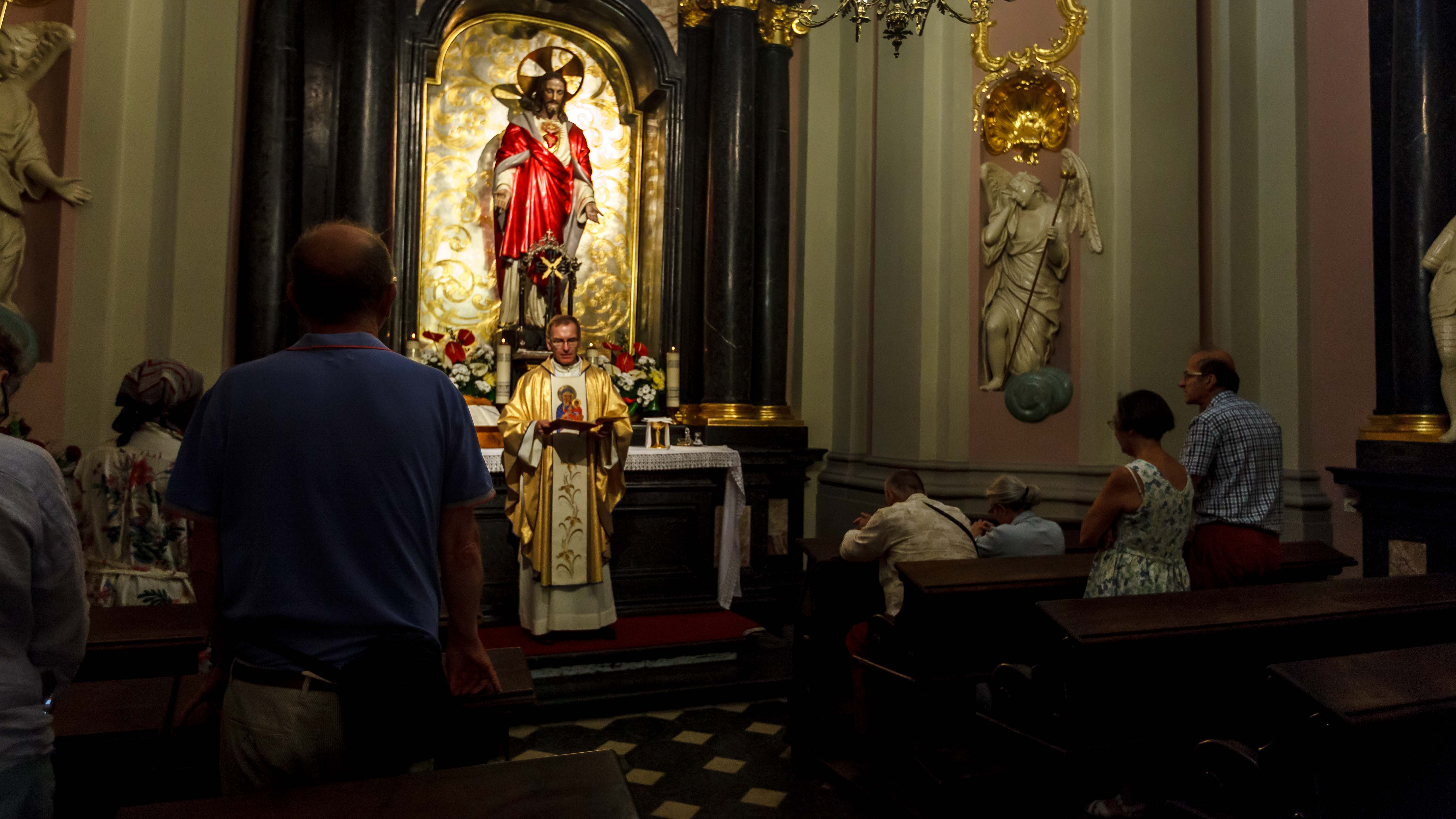
A priest leads mass in a chapel at the Jasna Gora Monastery.
For a Catholic, participation in mass is a critical step to receive God’s grace. One of the beliefs distinguishing Catholics from Protestants is that “grace is said to be communicated to people primarily through the sacraments of the Church.” In order to receive the Eucharist, one of seven Catholic sacraments, visitors to the Jasna Gora prioritize attending mass in the chapel that holds the Black Madonna.
As the next generation of the priesthood wanes across most of secular Europe, Polish seminaries remain full. Poland is the primary exporter of Catholic priests to other European countries.
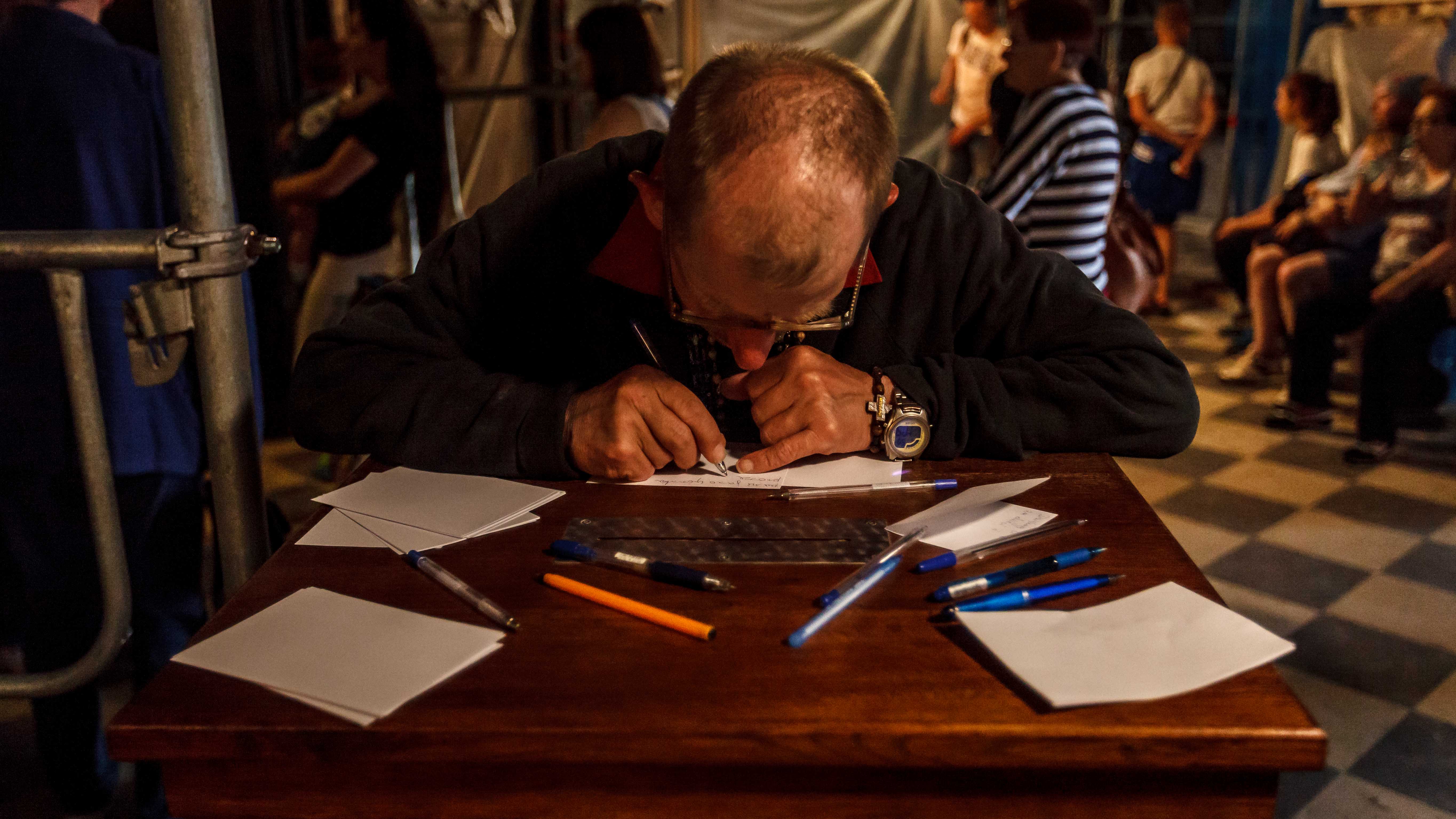
A man at the Jasna Gora monastery writes a letter to Mary, the mother of Jesus.
Catholics believe Mary and the saints intercede for them before God. Many pilgrims who experienced physical healing after visiting the monastery attribute their miracle to the Black Madonna. Crutches and other testimonies of healing cover a wall in the Jasna Gora monastery.
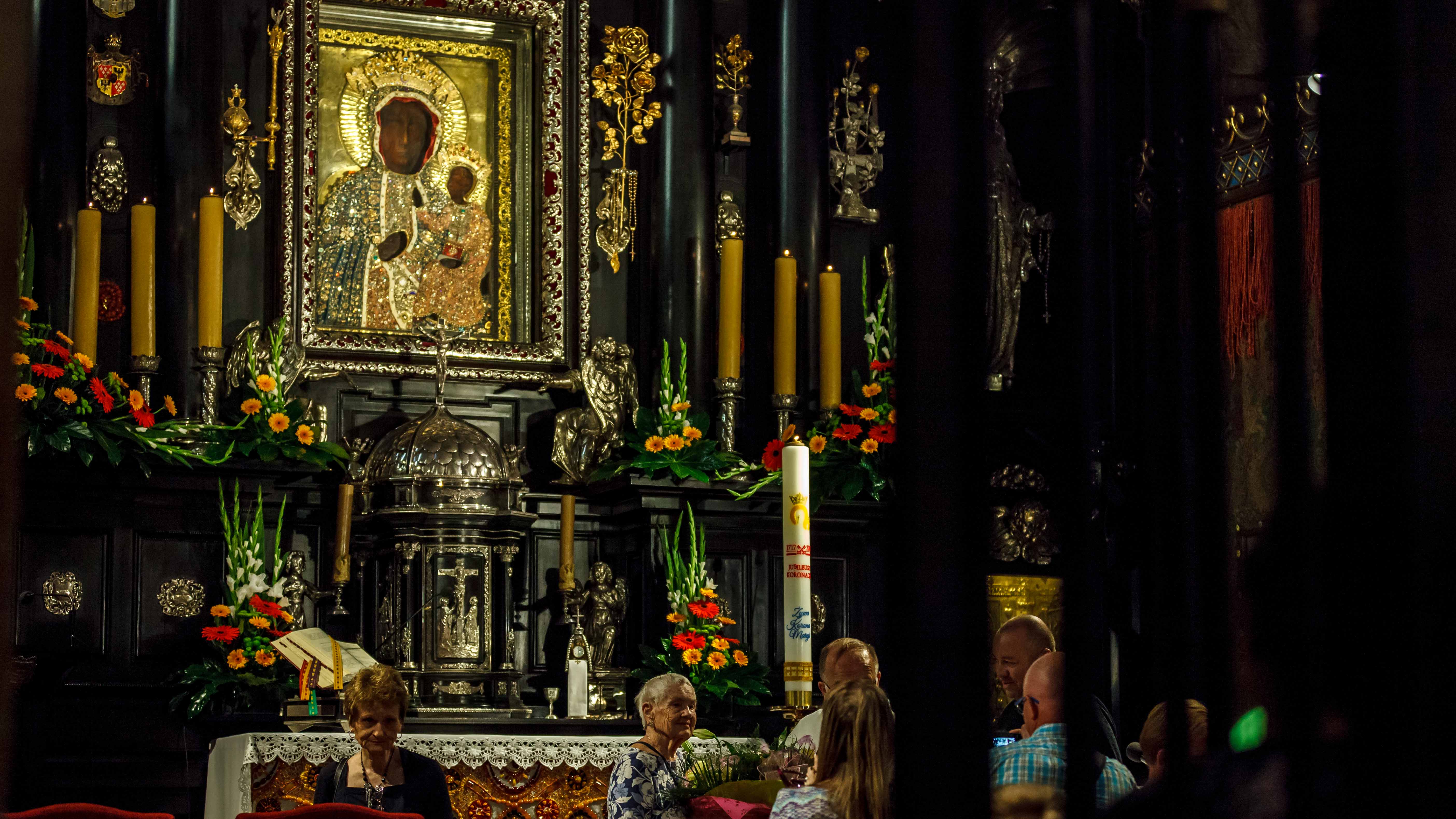
The Black Madonna of Poland is unveiled during the remembrance of the assumption of Mary.
When a Protestant Meets a Catholic
With all of this in mind, here are a few guidelines for Protestant believers interacting with people who hold to Catholic cultural and religious viewpoints.
- Ask and Listen
When we talk with Catholic friends, we need to come with a learner’s attitude. Ask questions and listen carefully. Understand what motivates their expression of religious devotion and why they do what they do. Remember that the “wisdom from above is first pure, then peaceable, gentle, open to reason, full of mercy and good fruits, impartial and sincere” (James 3:17 HCSB). - Pray for Opened Eyes
Pray that many men and women will experience God beyond tradition and culture. Pray they will see the Savior. With unfaltering purpose, Christ completed the task set out for him—bearing our punishment to secure forgiveness of sin and an eternal homeland. Pray that many will read the Bible for themselves and come to know this Christ. As you pray, encourage your friends to find truth by searching God’s Word. - Proclaim the Gospel
Missionaries in Poland are proclaiming the good news about Jesus. As we interact with cultural Christians—be they Protestant or Catholic—we too must share the gospel. Forgiveness of sin and hope of heaven is for all who repent and believe that Jesus took their punishment of sin on the cross. We can go from death to life by faith in this Savior.
Let’s live out this gospel and abandon anything that hinders us from a complete and pure devotion to Christ.
Learn More
“Is the Reformation Over” describes eleven doctrines on which Protestants and Catholics agree, and the two major differences that still separate them in the wake of the Reformation.
Madeline Arthington is a writer who serves with the IMB in Central Asia.
Patrick Royals is a media specialist serving with IMB in Europe. He captured all the photos used in this article.

